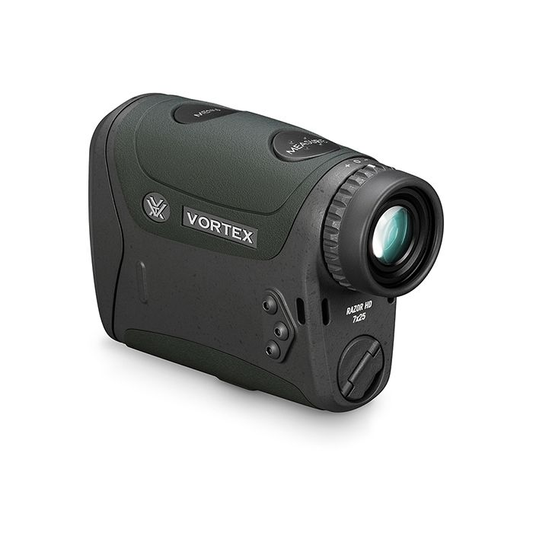

The Vortex Razor HD 4000 Laser Rangefinder LRF-250 is an indispensable tool for the dedicated marksman. Precision-engineered with premium high-density (HD) optical elements and XR Plus multi-coated lenses, this rangefinder delivers exceptional clarity. With the capacity to range up to a remarkable 4000 yards, it stands as a pinnacle companion for hunters and competitive shooters alike.
Its diverse functionality is optimized for various conditions with targeting modes such as HCD for angle-compensated distances crucial for accurate shooting. A robust LOS mode and a continuous scan feature enhance the adaptability of the Razor HD 4000 in the field. Designed with ruggedness in mind, the device is not only weather-proof but also light enough not to be a burden during prolonged use.
This sophisticated rangefinder is backed by Vortex's legendary unconditional lifetime warranty, ensuring reliable performance year after year. Whether you are an archer gauging the distance for the perfect shot or a long-range rifle enthusiast analyzing ballistics, the LRF-250 is engineered to improve your accuracy and elevate your game.
Features
- PREMIUM OPTICS: HD lens elements with XR Plus multi-coated lenses offer unparalleled visual clarity for precise ranging.
- ADVANCED HCD: Horizontal Component Distance technology for accurate angle-compensated distance measurements for both bow and rifle shooters.
- EXTREME RANGE: Capable of ranging up to 4000 yards to accommodate the most challenging distances.
- ALL-CONDITION USE: All Weather Capable ranging for reliable distance readings in diverse weather scenarios.
- FOUR TARGET MODES: Includes HCD, LOS, scan mode, and more to ensure optimal performance in any situational context.
- RUGGED DURABILITY: Rubber armor and ArmorTec lens coating provide protection and a secure grip under tough conditions.
- COMPACT & LIGHTWEIGHT: Ergonomic design makes it easy to handle and carry without adding significant weight to your gear.
- UNCONDITIONAL WARRANTY: Vortex's lifetime warranty guarantees the rangefinder's durability and performance.
Specifications
| Specification | Detail |
|---|---|
| Weight | 9.9 oz. |
| Dimensions | 4.49"x1.34" |
| Eye Relief | 16-19 mm |
| Field of View | 341.25 ft @ 1000 yards |
| Range (Reflective) | 5 yds. to 4000 yds. |
| Max Range (Deer) | 2200 yds. |
| Max Range (Tree) | 2500 yds. |
| Objective Lens Diameter | 25 mm |
| Angle Compensation | ± 70° |
| Measurement Units | Yards/Meters |
| Beam Divergence | 2 MRAD wide x 0.1 MRAD tall |
| Battery Type | CR2 |
| Monocular Details | 7x HD Optical System |
| Lens Coating | XR™ Plus Fully Multi-Coated |
| Measuring Time | < .25 seconds (Normal Mode) |
| Magnification Range | 7x |
| Waterproofing | O-ring seals |
| Display | LOS |
| Item Condition | New |
| UPC | 875874009554 |
| MPN | LRF-250 |
| Product Type | Laser Range Finder |
WHAT'S IN THE BOX?
- Vortex Razor HD 4000 Laser Rangefinder
- Carrying case
- Lens cloth
- Hex wrench
- CR2 battery
You May Also Like
Here’s some of our most similar products people are buying. Click to discover trending style.











